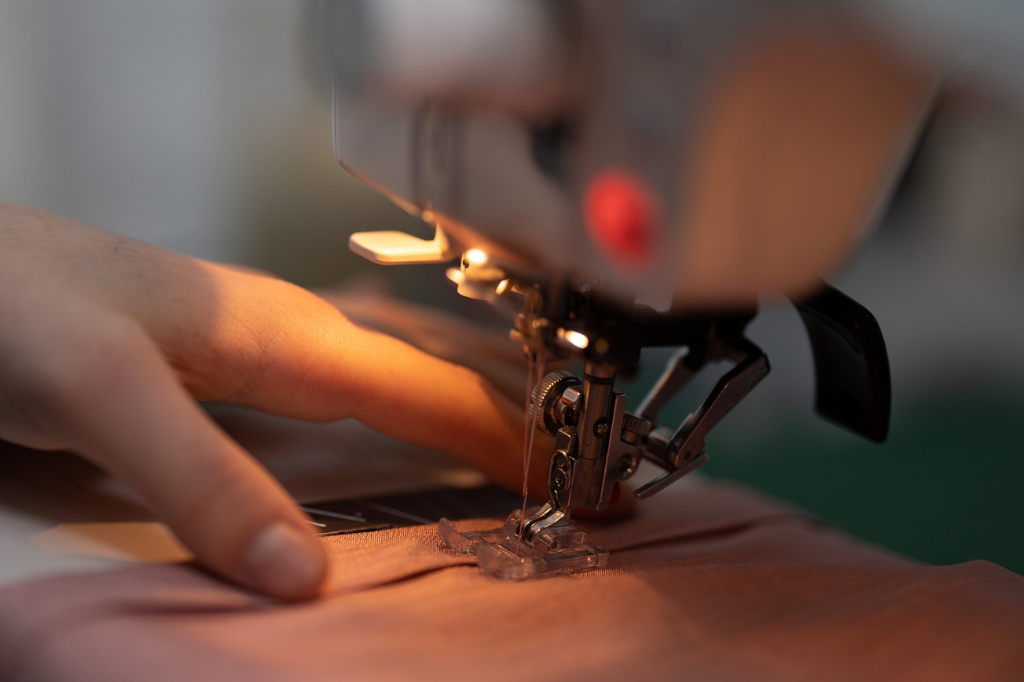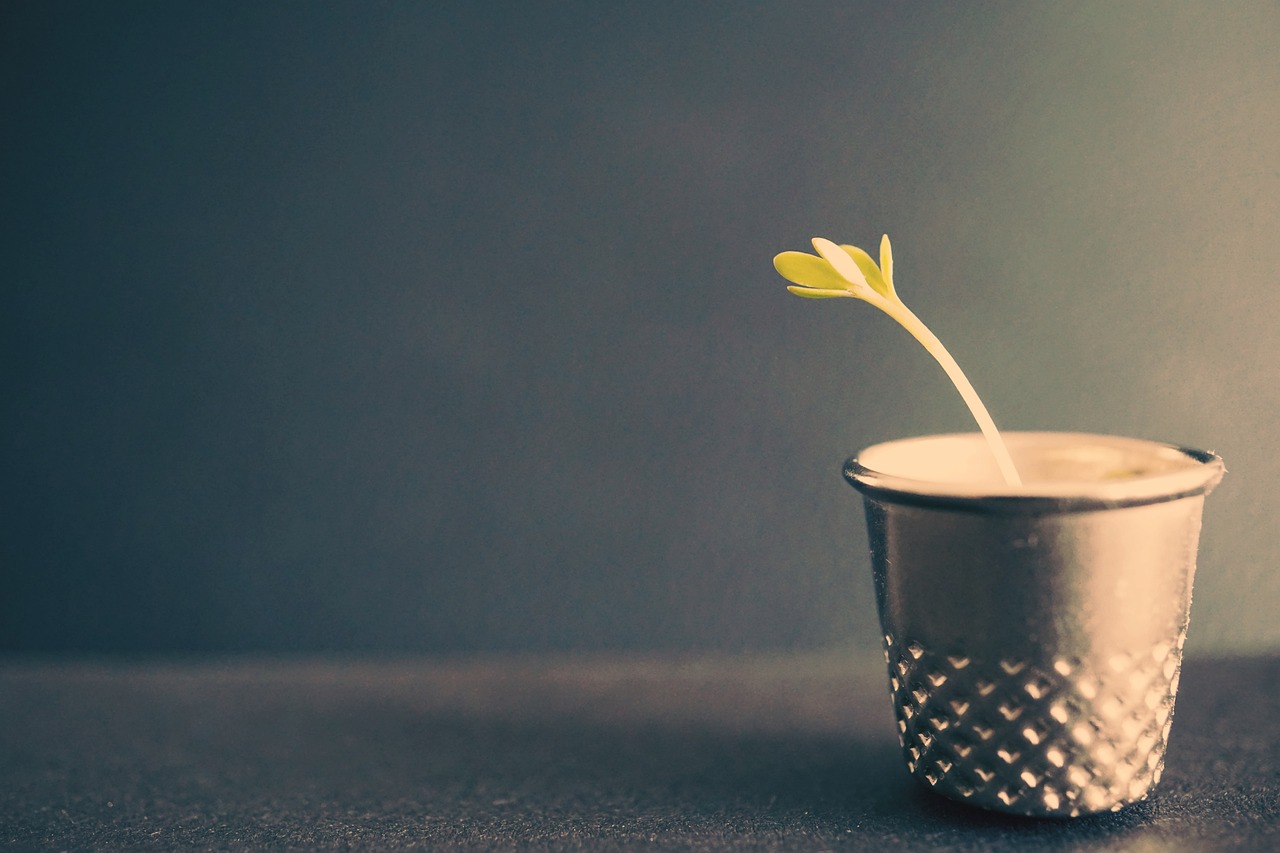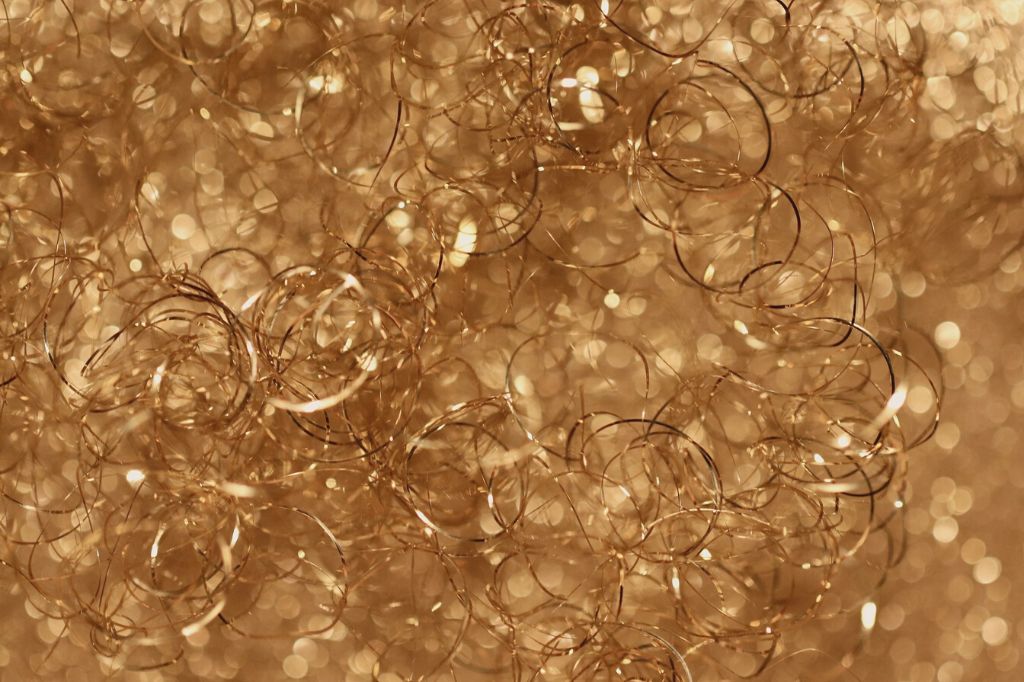Bringing Sustainability to your Sewing Practice
Whether you’re new to sewing or a sewing pro here are ten tips for sustainable sewing that you can incorporate into your sewing practice.
1. Learn to Mend

Who doesn’t want to extend the life of their favorite clothes? Learning to hem up a cuff or patch a small hole can be a great introduction to the world of sewing and it’s sustainable too!
Visible mending has been growing in popularity recently but you can always go classic and make your mend as invisible as possible if that’s more your style.
For tips on where to start check out my post 3 ways to mend clothes.
2. Up-Cycle Your Old Clothes

Clothes too far gone to be mended? Or the sizing is no longer working for you? Try turning them into something new entirely!
Items with too much material can be made smaller and items you’ve outgrown can be turned into pillows, children’s clothes, or even used to add a bit of character to something else.
A favorite band shirt into a back patch is a great d.i.y. starter project for sewing.
3. Re-Purpose Curtains, Sheets, and Tablecloths

Looking for a cheap source of material? Try checking your local second-hand store (or going through your linen closet) for some curtains, sheets, or table cloths that you can re-purpose.
If you need material to test a new pattern this is a great way to save a little money and to save the earth a little too. You could even give them a new life by turning them into other home goods!
4. Source Your Material Second Hand

Once you start sewing you end up with a stash of material.
Stash fabric could be material leftover from an earlier project, clothing you aren’t sure how to re-purpose yet, or even just something you bought on sale that you are saving for something special.
If you know other sewers why not organize a stash trade? You know the saying, one woman’s fabric trash is another woman’s fabric treasure!
5. Buy Deadstock Fabric

Deadstock fabric is material leftover from producers. Since it’s rejected material it can contain flaws in the print or weave that make it a poor option for commercial clothes – but a perfectly good option for home-sewn ones!
Deadstock fabric can be a great way to get unique prints and sometimes even designer ones. There are a few retailers that offer deadstock fabric in addition to their regular material, my favorite is Stonemountain & Daughter Fabrics.
6. Use Your Scraps

It can be so tempting when you find a new pattern to immediately go and do some shopping for the perfect fabric but before you go – double-check your fabric stash! You may have just the right thing tucked in the back of your closet.
Pockets, linings, and collars can be great stash busters too, add a little pop of nostalgia by accenting your new outfit with material from an old favorite.
Scraps can also be used as stuffing for pillows or dolls or even sewn together to make a quilt.
7. Save Buttons, Closures, or Pockets

If you have clothes that just aren’t fit to wear anymore you can always strip them of their useful pieces before adding them to your scrap bin. Hand-me-downs or particularly hideous re-gifts can be a great way to score some unique buttons for a project later!
Plus, if you’ve taken all the buttons and closures off then when you retrieve the material from the scrap bin it’s all ready to go.
8. Use Natural Materials

Many materials used in clothing today are made with nylon, polyester, or rayon which are all made of plastic.
Washing synthetic materials actually sheds small amounts of plastic (called microplastic) into our water systems which eventually ends up back in the food chain, yuck!
Now that doesn’t mean you need to stop wearing ALL plastic blends but opt for natural fibers where you can. Linen, Cotton, and Tencel are all great for garments and they’re more breathable too.
9. Try Sewing Some Reusable Home Goods

From paper towels to swifter pads there’s a reusable pattern for everything these days. Kitchen patterns can be a great way to give a new life to an old towel or to bust into your fabric stash!
If you aren’t quite ready to ditch the paper goods quite yet pillows, shopping bags, or rope baskets may be more your style. One thing that’s for sure is that it’s a great way to add a little sustainability to your day-to-day routine.
10. Focus In On Classics

Trends may come and go but classics can last forever.
Before you start making your own version of the latest clothes it’s good to take a minute and ask yourself if what you’re making is something you’ll still want to wear a month from now.
If the answer is no, why not try making that trendy piece out of material you already have? Or making something similar but that you think you’d wear for longer.
Of course, if you REALLY want to try making that dress you just saw on TikTok – there’s nothing wrong with indulging in 8 yards of brand new polyester silk occasionally.
It may not be good for the planet, but all things in moderation, and sometimes a ridiculously puffy princess dress is just plain good for the soul.
What do you think?
What’s your go-to sustainable sewing trick? Have you tried any of these before?
Comment below and let me know!
If you’ve never tried sewing before but you’re interested in giving it a try then keep an eye out in June for my 5 part series Sew you Want to Sew








